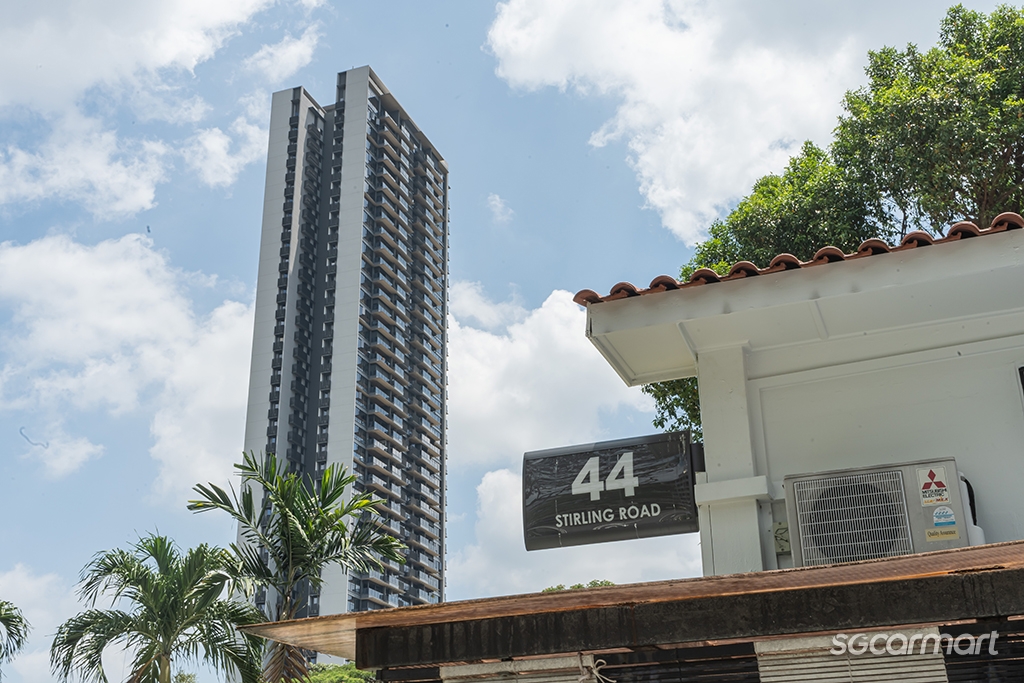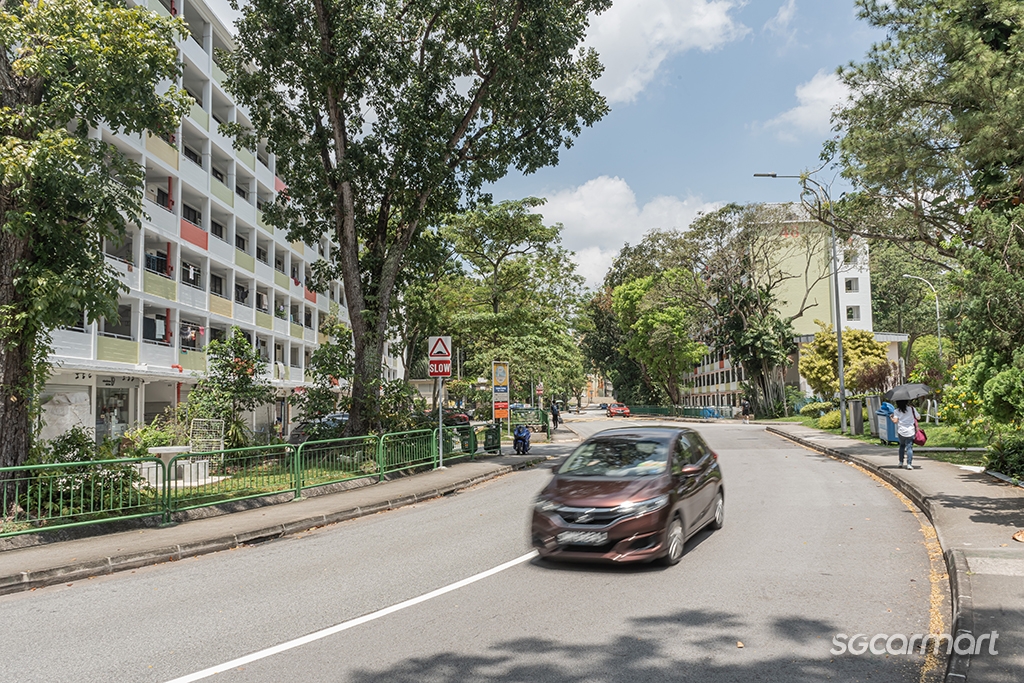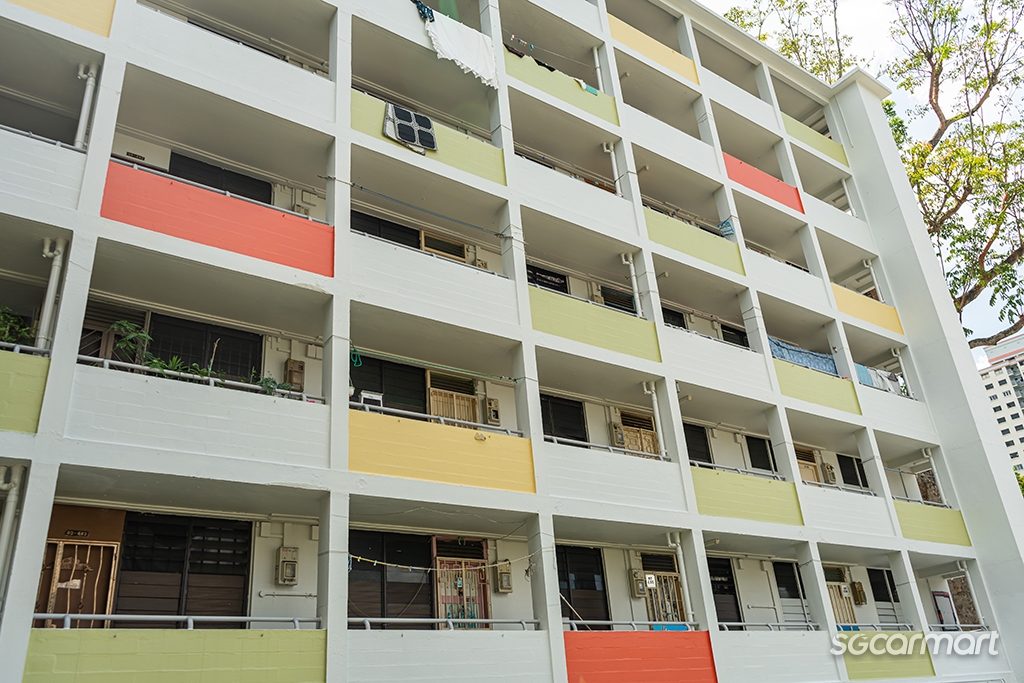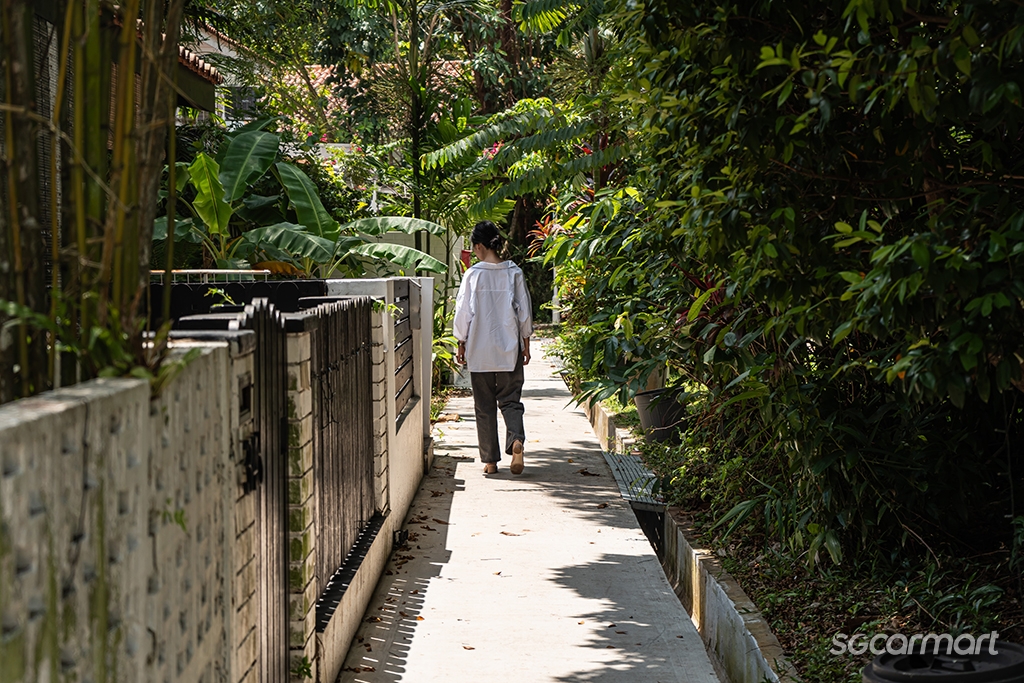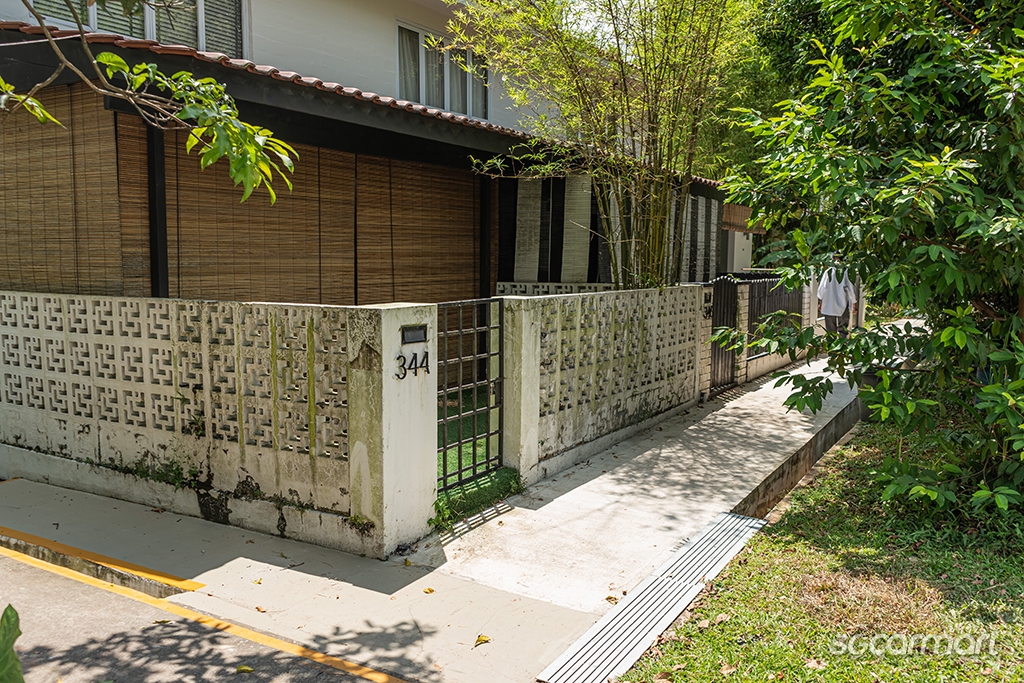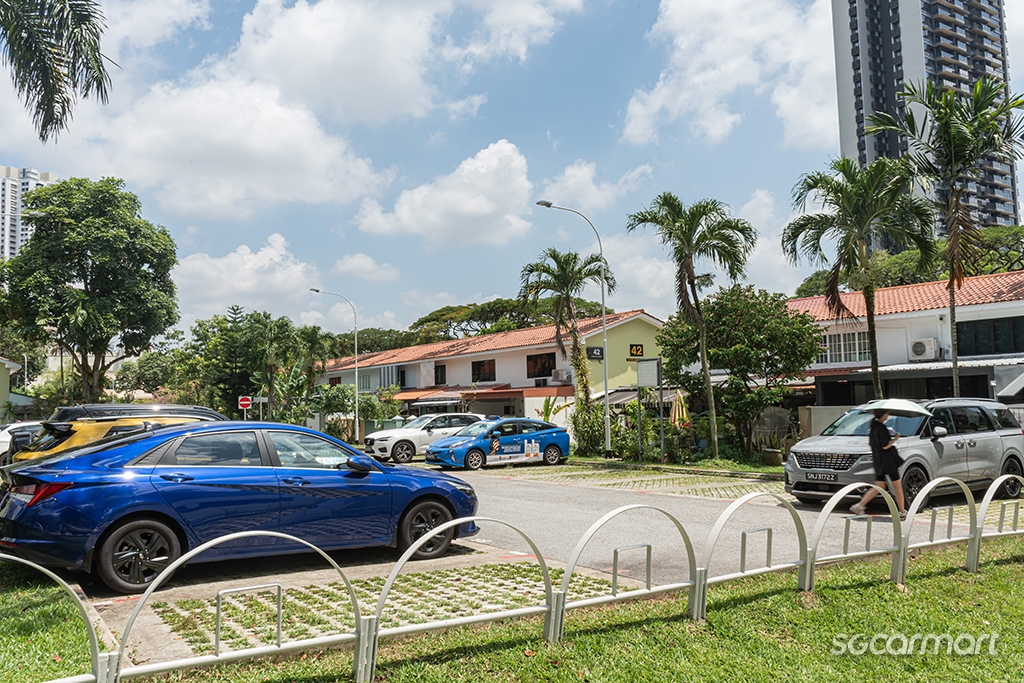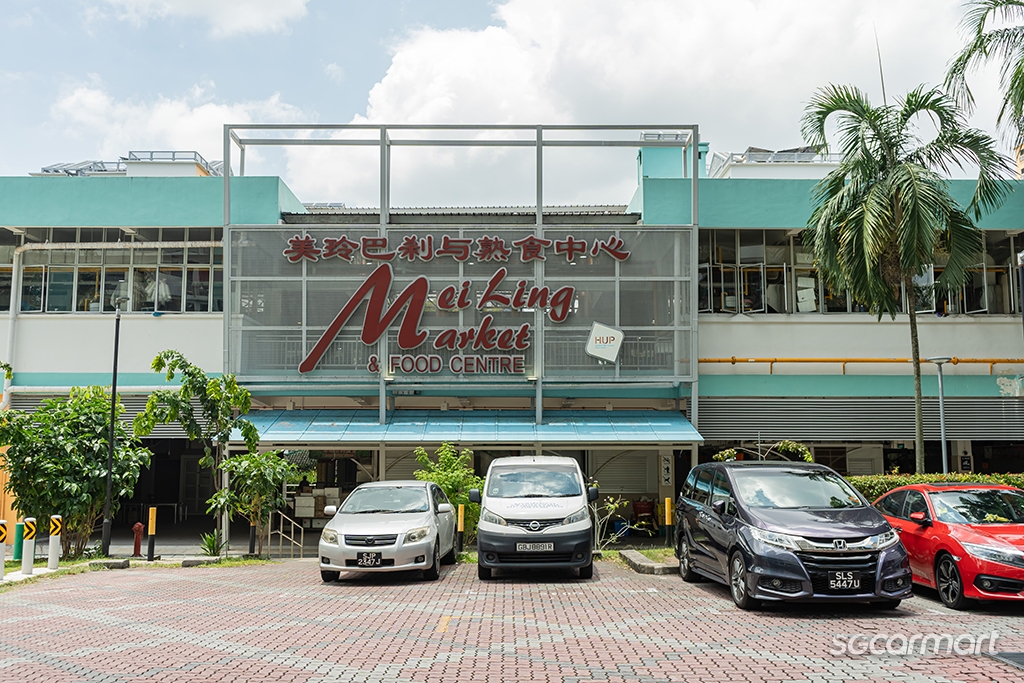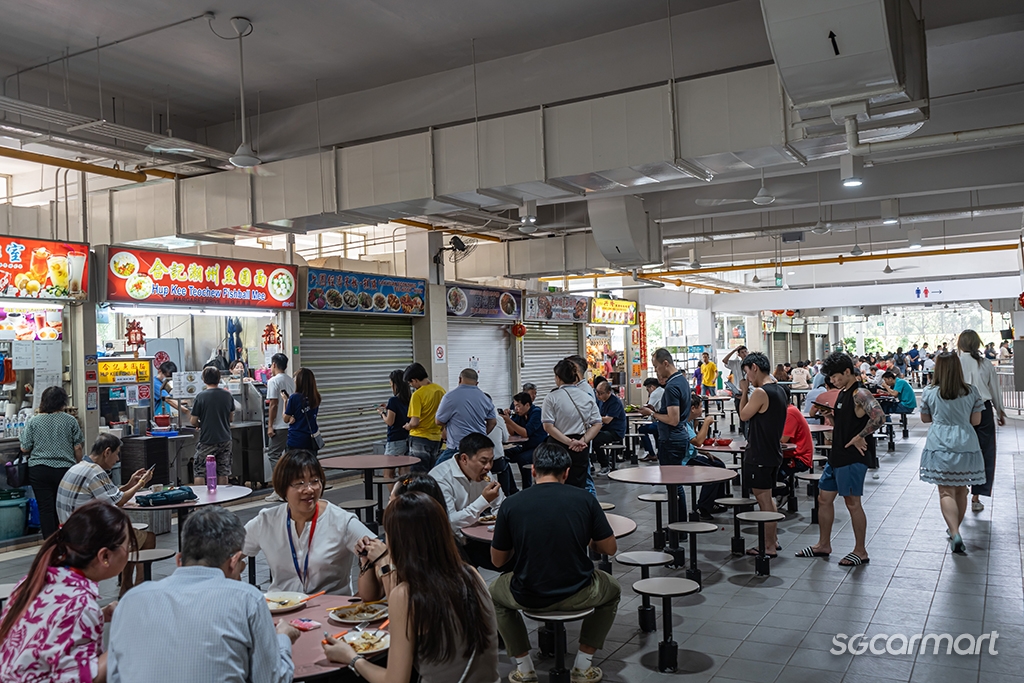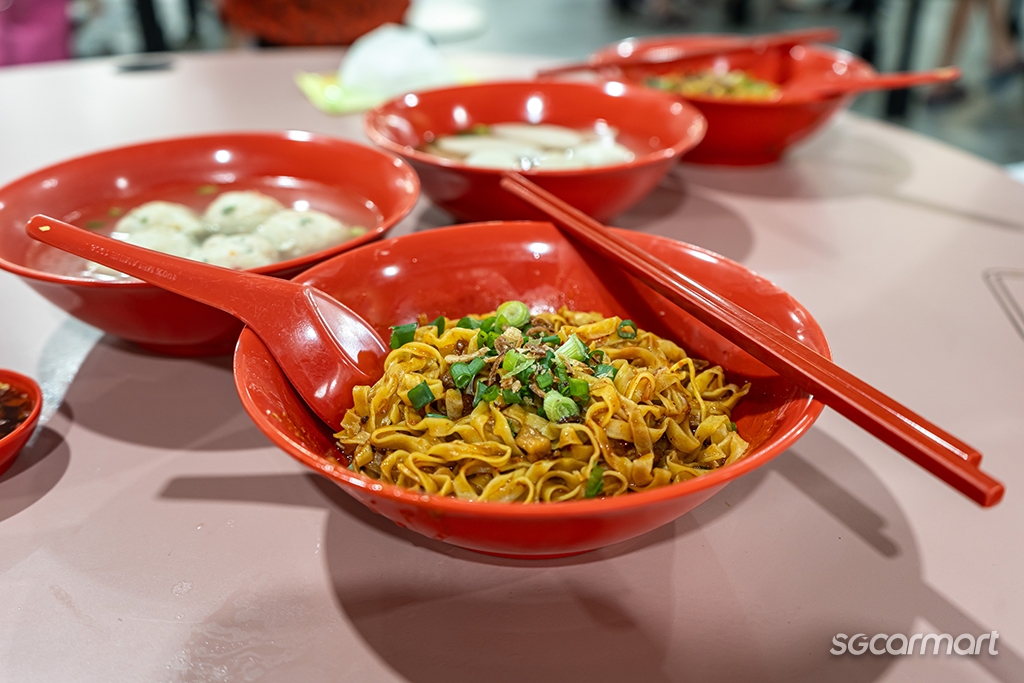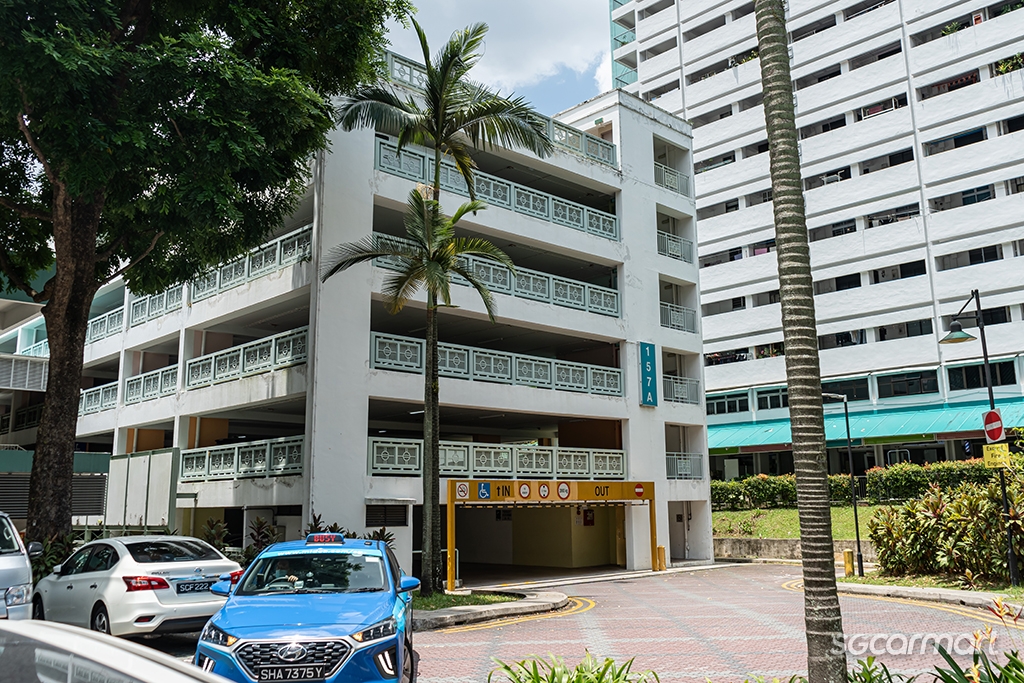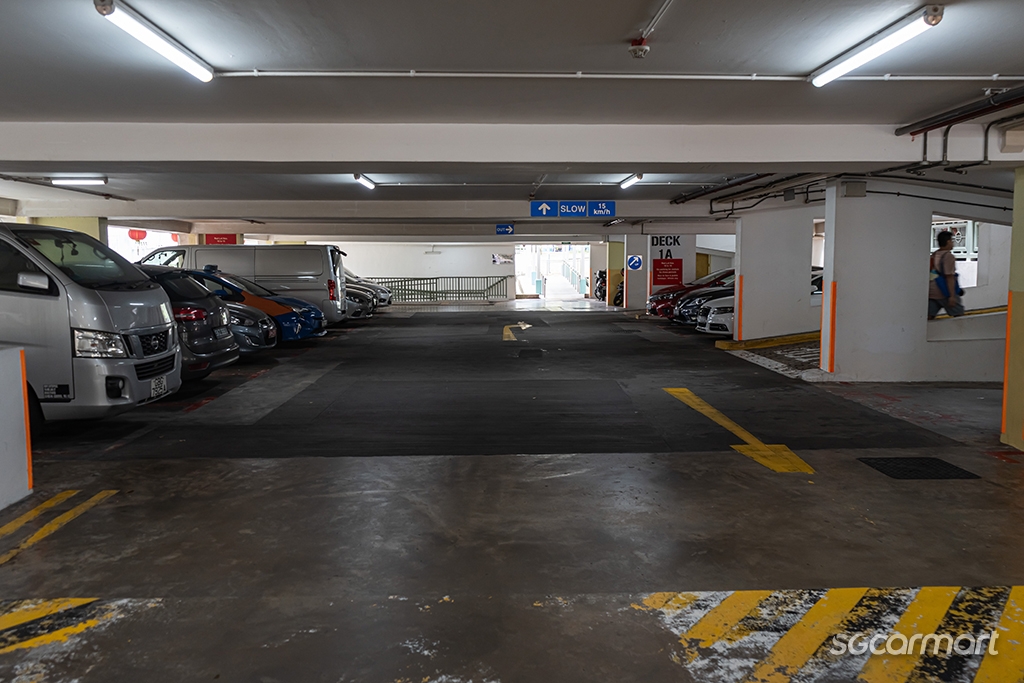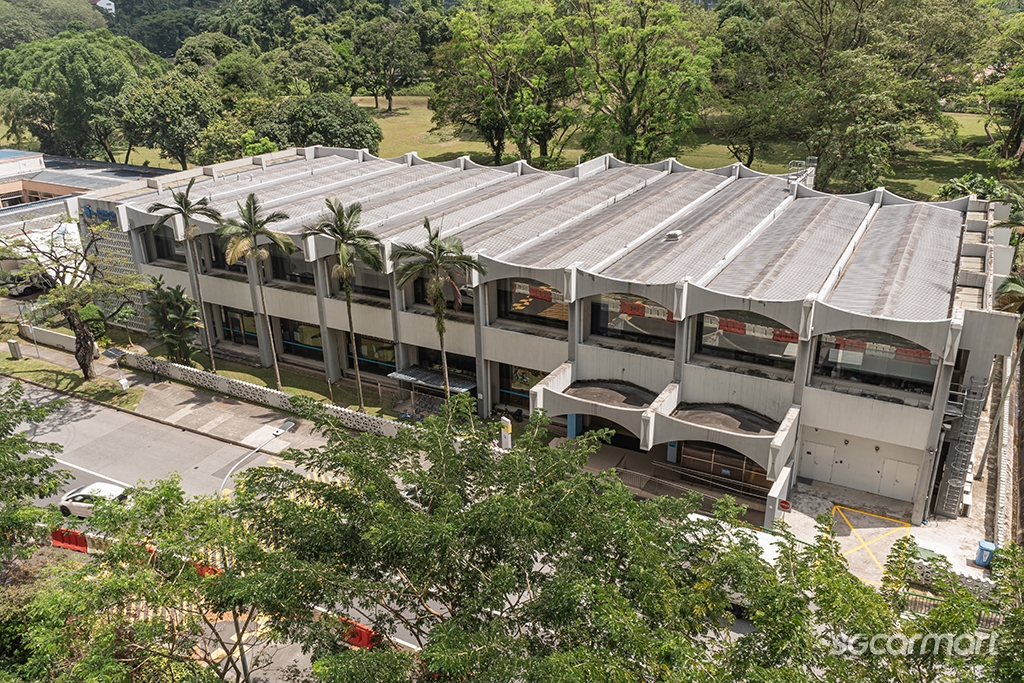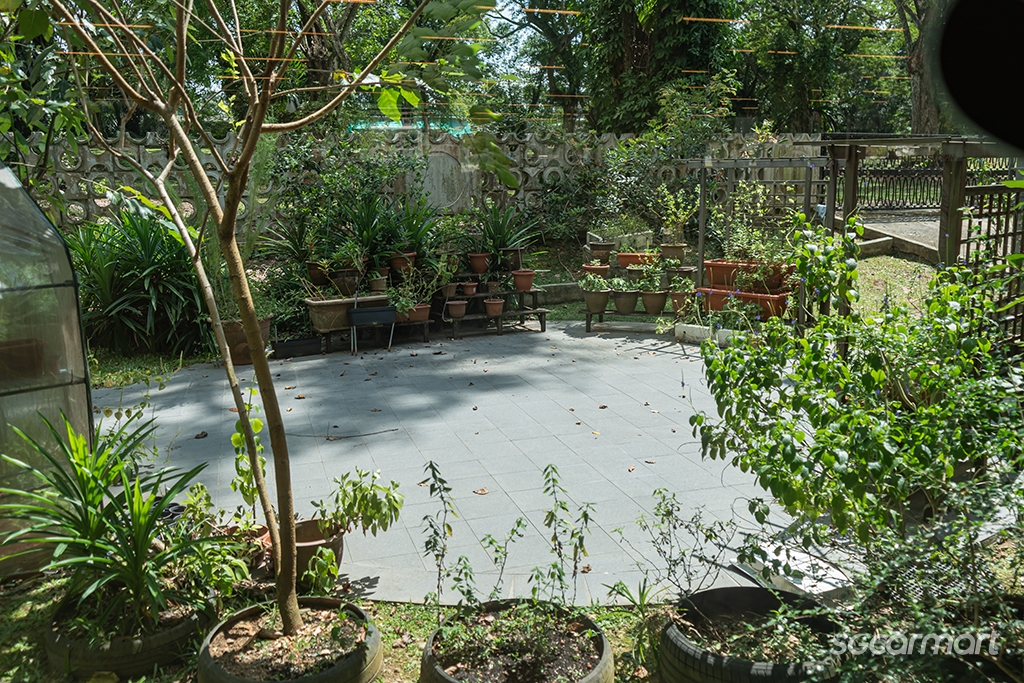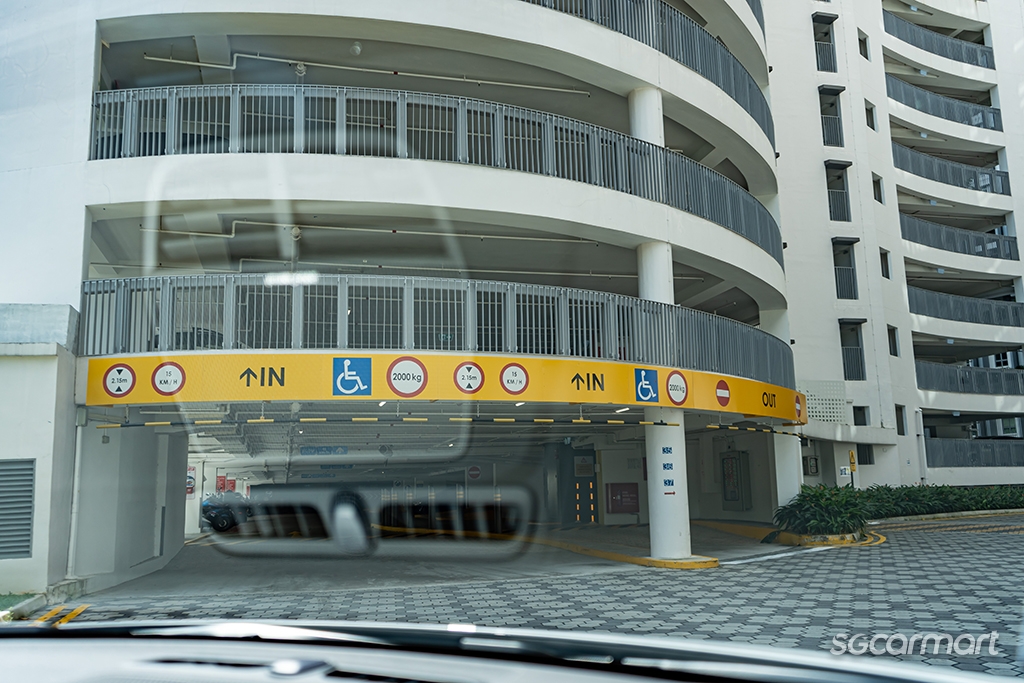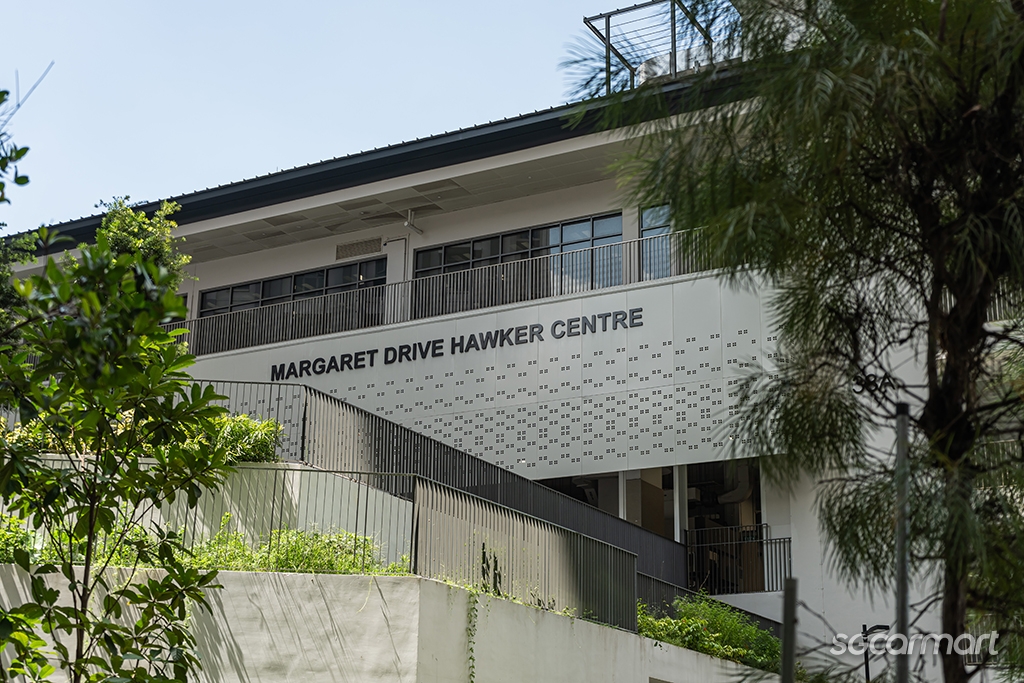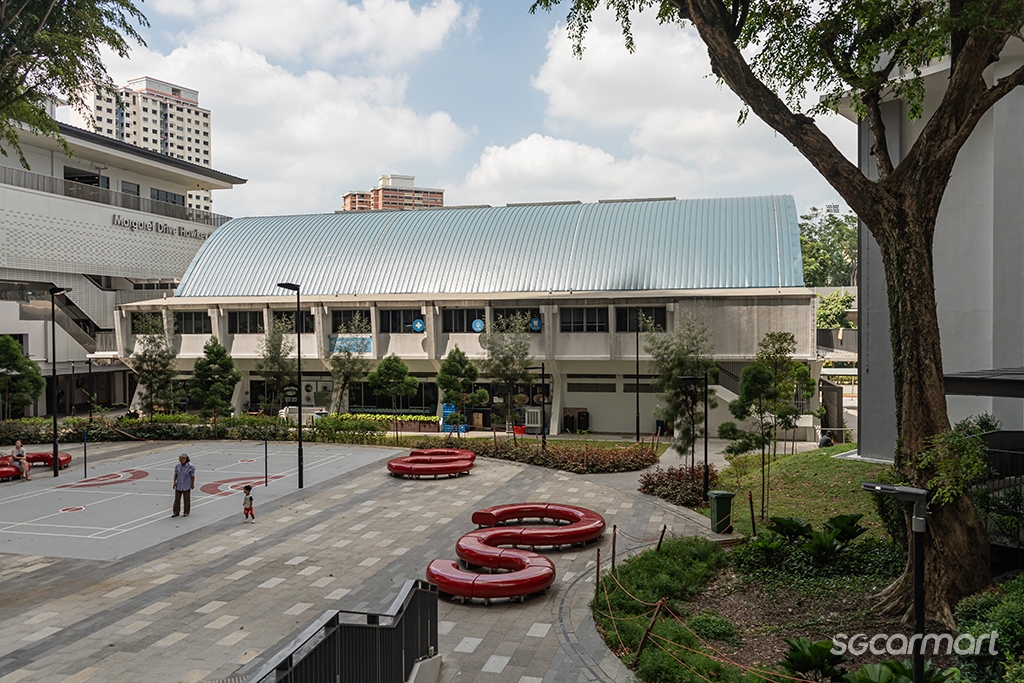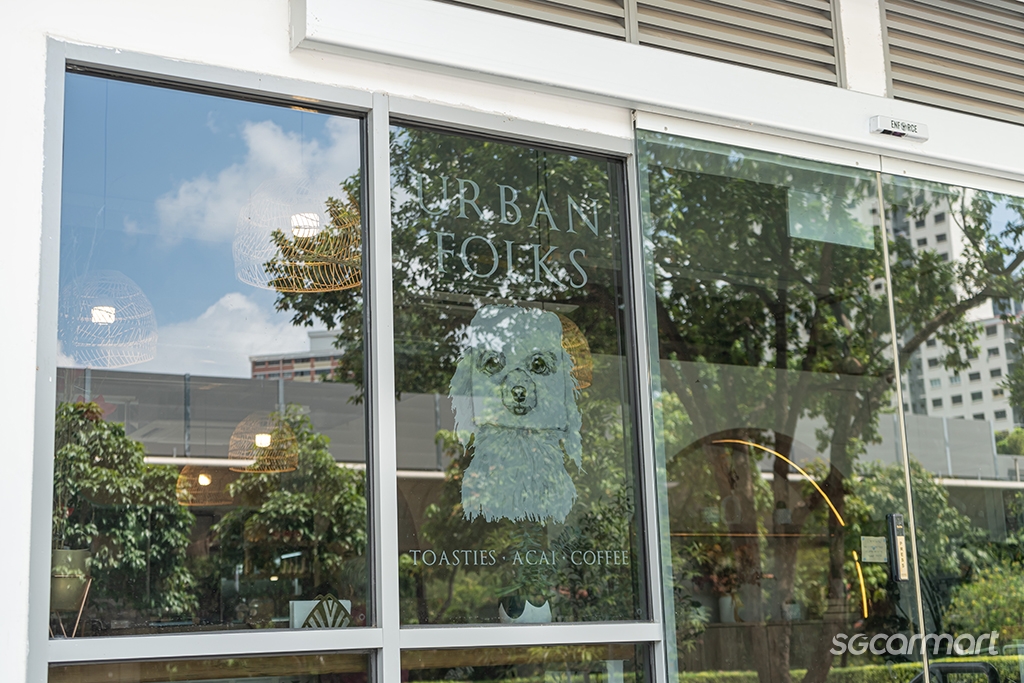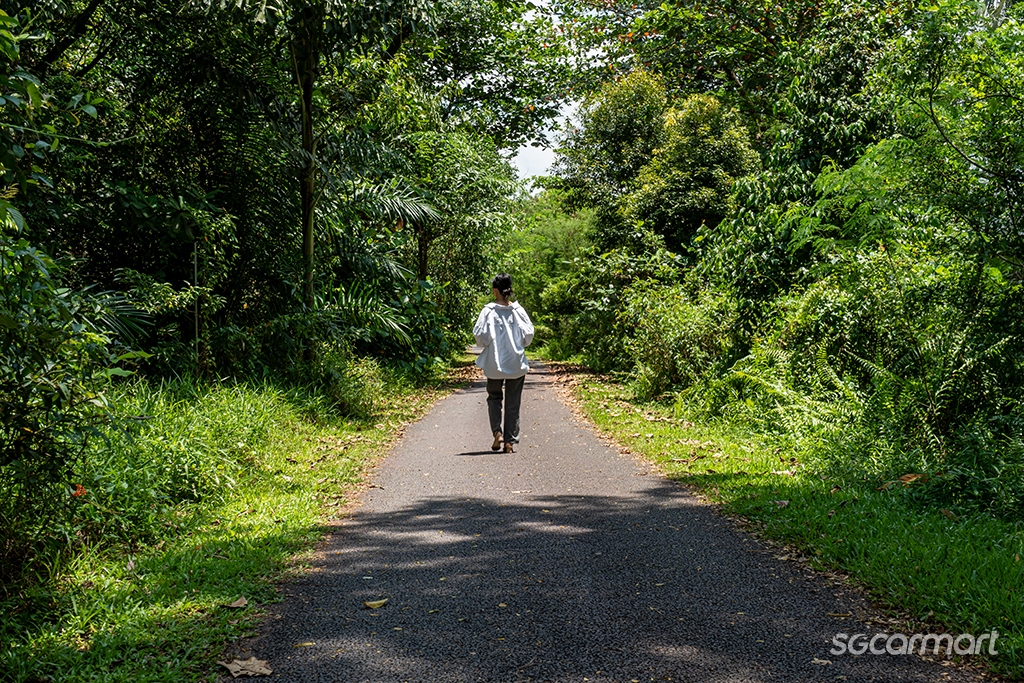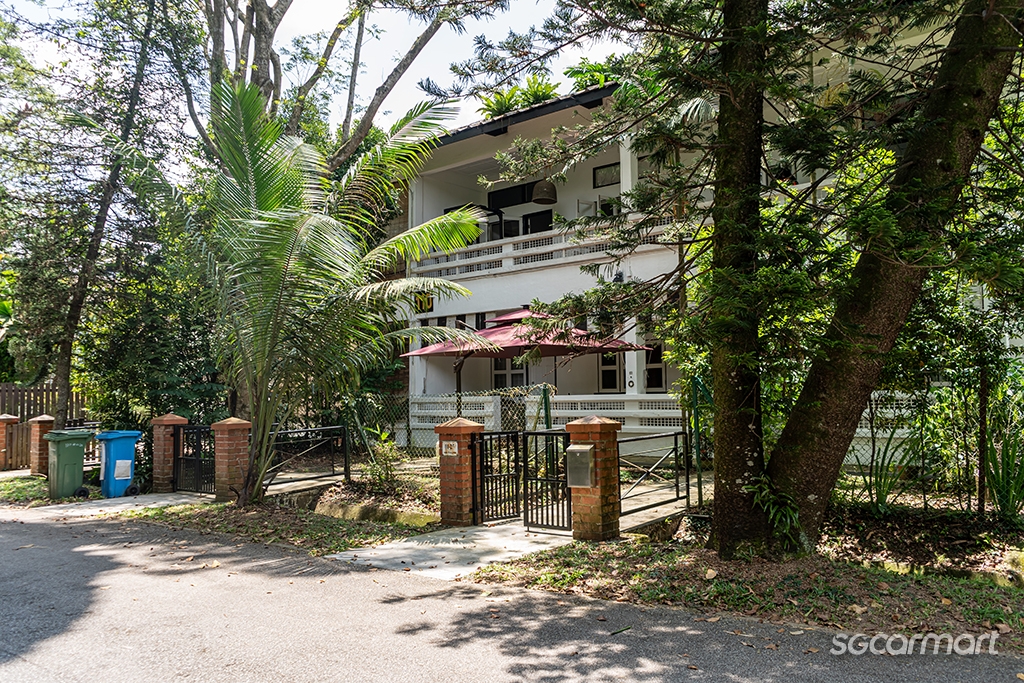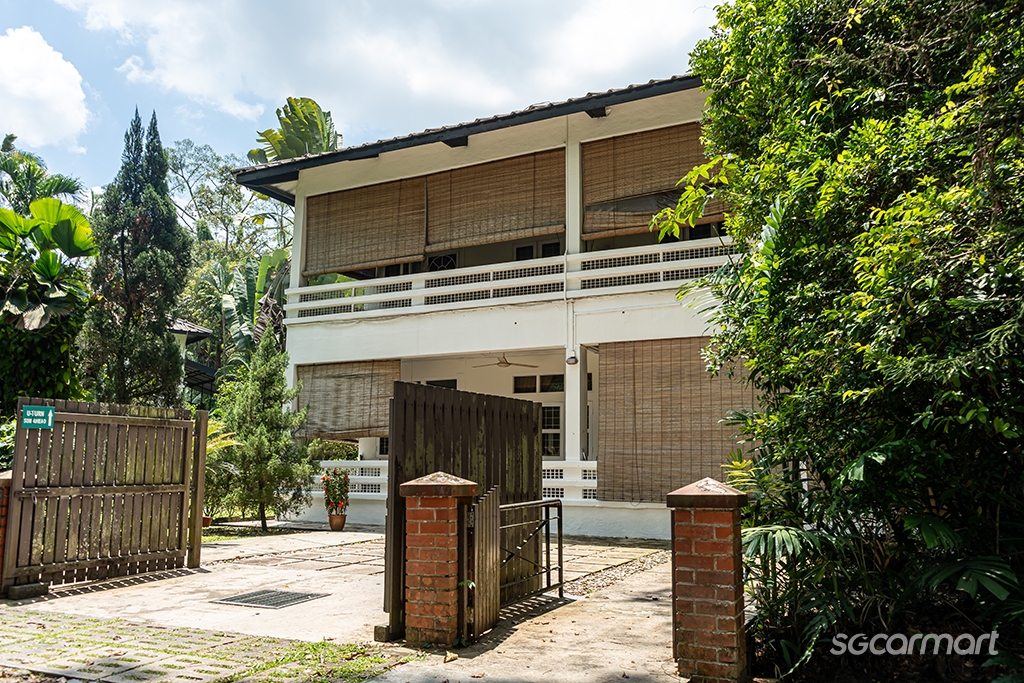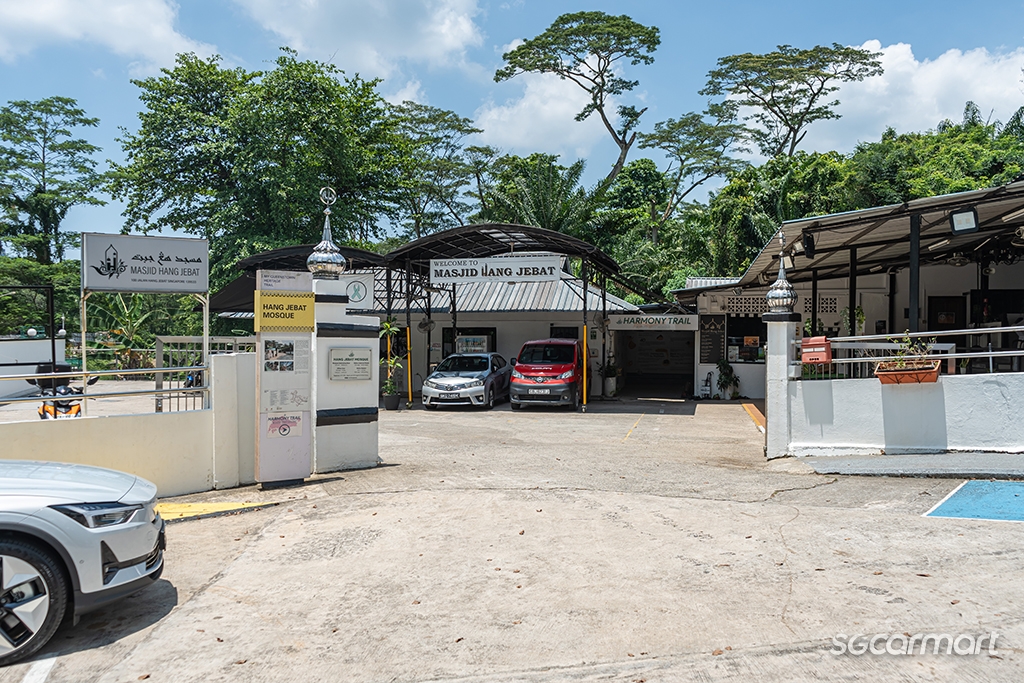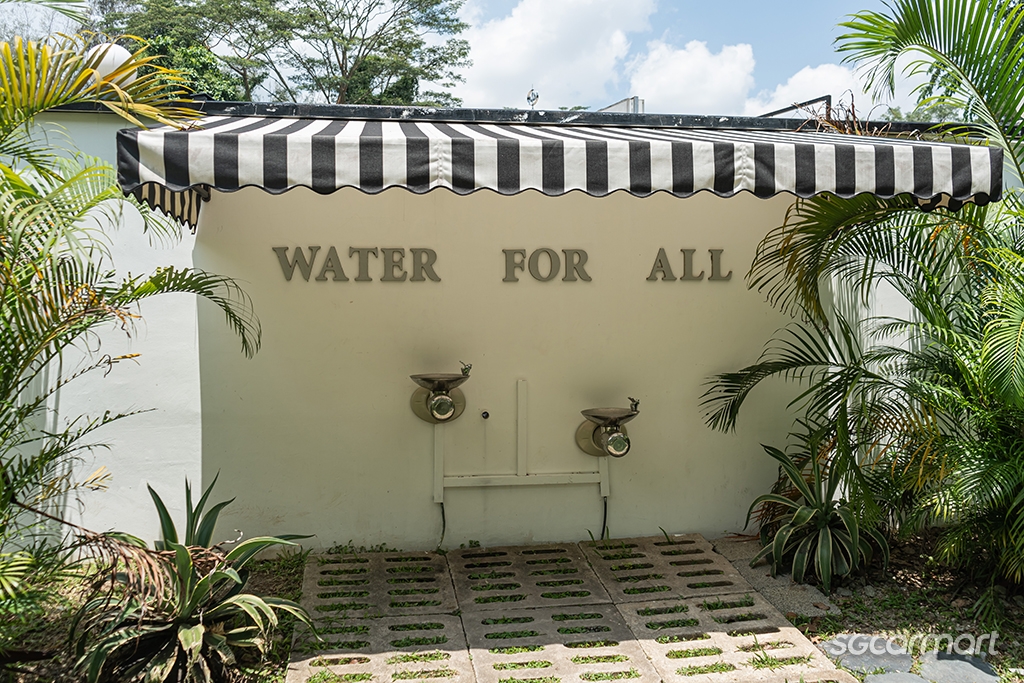Sgcarmart Explores: Queenstown!
27 Mar 2024|3,507 views
The Queenstown estate was one of the earliest housing estates built in Singapore, and is in fact the first satellite new town in Singapore. Indeed, it marked the beginning of the Housing and Development Board (HDB). Interestingly, development was initiated by the former Singapore Improvement Trust in 1952 but completed by HDB in the early 70s.
This transition, from the colonial SIT to the HDB that's much more familiar to what we see today, thus explains the curious quirks and historical richness of the Queenstown area.
To clarify, Queenstown is technically very huge (as defined by the Government's districting zones). It stretches all the way west to Dover, and down south to Kent Ridge. The area we are exploring is centred around Queenstown MRT station, and bounded by Margaret Drive, Queensway/Portsdown Road, AYE, and Alexandra Road. We will cover those other areas in future editions of Sgcarmart Explores.
Word of advice: Road conditions to take note of in Queenstown
Because of the way Queenstown was developed in phases, there was clearly less of a singular, top-down urban planning approach. The result is a complex road layout architecture that deviates from the grids that most newer estates have been built around. Take a quick look at Google Maps and you'll realise that there are very few straight roads (a stark contrast to the specifically grid-based Punggol and Sengkang estates, for example).
As a result, navigating the area for first timers can be a tad trickier, as many of the roads ebb and flow from each other and through different areas. An obvious example is Stirling Road, a curvy and long Y-shaped road that flows through the entire Mei Ling estate and has three (or four) distinctly different entrances/exits.
1. Stirling Road HDB Estate
Speaking of Stirling Road, let's start with the OG HDBs. Co-developed by the HDB and SIT and completed in 1960, Blocks 45, 48 and 49 Stirling Road were among the first HDB blocks built, designed to offer Singaporeans affordable public housing. Seven-stories high and standing prominently amidst an area that was mostly undeveloped swampland, these blocks became affectionately known as qik lao - Hokkien for seven stories (yes, quite a literal nickname).
These three blocks stand till today (and remain occupied), and distinctive details like old-school letterboxes and old-fashioned window frames give them their particular charm. Even the first-floor shops at Block 49 look like they haven't changed for decades.
However, the area is perhaps most well-known for the HDB Terrace Houses, in fact a relic of our colonial past. Originally built in the 50s by the SIT in the Queenstown and Whampoa areas, these terrace houses offered landed property-like living, without the landed property price tag (back then, at least). Because they were taken over by the HDB, these houses actually have 'block numbers', even though they hardly qualify as blocks.
It is somewhat ironic that given this area's early reputation for affordable, low-cost living, the Queenstown area has nowadays become one of the most sought after (and thus expensive) areas to live in. In fact, the HDB terrace houses here in Stirling Road (about halfway through their standard 99-year HDB lease), and some HDB flats in neighbouring estates, have been known to fetch close to seven-figure sums.
There are small open-air HDB carparks dotted around the estate, and because the area is pretty low-density, parking availability should not be an issue
Where to park: Very small, open-air HDB carparks (we counted 8 lots in the smallest one) can be found around the area and reflect the old nature of this particular estate
Ease of parking: 4/5. Given the low-density nature of this specific area, parking should not be difficult. Though the carparks are quite small, they won't typically completely full
Parking rates: $0.60 per half hour, charged by the minute (HDB rate)
2. Mei Ling Market and Food Centre
Just a short walk/drive from Stirling Road is Mei Ling Street, home to another HDB first - the first point blocks in Singapore, built in the 70s.
Designed to be a self-contained town, the Queenstown area features notable amenities like a library (more on that later), the first polyclinic (Queenstown polyclinic, still operational), and the first neighbourhood sports complex (Queenstown Sports Complex, temporarily closed for "rejuvenation works").
Nestled among the HDB flats along the U-shaped Mei Ling Street is Mei Ling Market and Food Centre. Though renovated, it has retained some distinctive design elements from days long past like the flower-shaped holes in the stairwell that offer natural illumination.
Perhaps the most famous stall here is Shi Hui Yuan Hor Fun Specialty, which was been awarded Michelin Bib Gourmand Awards.
Other notable hawkers include Sin Kee Famous Chicken Rice, Mr Bready, Xin Lu Teochew Fishball Noodle, Hup Kee Teochew Fishball Noodle (featured in the Singapore Michelin Guide!), and Ah Pang Steamboat Seafood that does a solid pork chop dish and comforting steamboat at night.
It's a popular hawker centre that gets quite crowded on weekdays during lunchtime, as it's just a short drive away from office areas along the Leng Kee/Jalan Bukit Merah stretch. And if you need your specialty coffee fix, Tiong Hoe is one road down and a short drive/walk away.
Where to park: Block 157A Mei Ling Street, a multi-storey HDB carpark that connects directly to the hawker centre on the second floor
Ease of parking: 1.5/5. It's a very old carpark, so it's very cramped and narrow, which can be challenging for less experienced/confident drivers. There are some surface level lots, but they are almost always going to full during lunch and dinner time. Non-season parking lots also only begin on level 3 upwards, so climbing and descending is inevitable. Go slowly, be patient, and take a wide berth when navigating the ramps. We have been guilty of kerbing a rim here before
Parking rates: $0.60 per half hour, charged by the minute (HDB rate)
3. Queenstown Public Library
Not all libraries are created the same.
This is especially true of Singapore's public libraries and of one more so than the others: The Queenstown Public Library.
Opened on 30 April 1970, it is the oldest and first neighbourhood library in our history. Standing at two storeys tall, it's a heritage building that's been gazetted for conservation. 53 years on and two rounds of upgrading works in, the Queenstown Public Library continues to retain its grey coloured exterior facade completed by bow-tie arches.
Step inside and you should get the same feeling of being transported back to the 90s. It isn't very common these days to find an assembly of furniture made from pale wood reminiscent of those harvested from American White Ash trees. At the Queenstown library, you get plenty of these - bookshelves, tabletops, chairs, and even…the toilet doors.
But this analogue mood of the place is one that's orchestrated to keep pace with the air of quaintness that surrounds Queenstown. While it makes the digital library guides and multimedia stations seem oddly out of place, one thing the library has gotten quite right is imbuing its existence with an irreplaceable sense of community.
Sitting outside the Queenstown Library on level one is a garden that came into being thanks to the "Community In Bloom" programme. As long as you're a user of the library, you can walk into the garden to appreciate the plants, herbs, spices, fruit trees or even volunteer your green fingers!
Soon enough, though, the library will shut its doors in the first quarter of 2025 for a large-scale refresh that will take two years. When it reopens, the library will have wellness and sustainability features ready for its patrons. As much as the Queenstown Public Library must move on with times, it is the residents' hope that its unique "old look and feel" be retained.
"No other library in Singapore has this kind of feel. Don't change it in the name of 'revamp' until it's like any other library. Then it loses its soul," Mr. Alex Yeo, a 48-year old teacher, told The Straits Times in July last year.
Where to park: There’s no on-site parking, but there is new HDB carpark directly across, Blk 37A Margaret Drive
Ease of parking: 5/5. It’s a brand new, big and tall carpark, easily accessed from Margaret Drive
Parking rates: $0.60 per half hour, charged by the minute (HDB rate)
4. Margaret Drive Food Centre
Just across Margaret Drive from Queenstown Library is Skyresidence @ Dawson, a recently completed HDB estate (in 2021) that features eight blocks, the tallest of which rise to a whopping 47 stories.
This estate (and many of the neighbouring ones) is in fact a re-development of a very old area. The road itself was built in the mid-50s, and ran through Queenstown's first two neighbourhoods. In the 60s and 70s, Margaret Drive had over a dozen schools co-existing together, and many of Queenstown's earliest pre-HDB public housing projects were located along the road (they have since been demolished).
Up until more recently, people may still remember the two-hall cinema with a neighbouring bowling alley, with their iconic colourful brick facade and neon signage, as well as the 'Margaret Drive Hawker Centre' that existed there from 1969 until 2011 (Commonwealth Avenue Food Centre was its the actual name).
Newly redeveloped, Margaret Drive Food Centre features hawkers located across two levels (a throwback to the original). From old stalwarts like Tong Kee Chicken Rice to newer favourites like Hakka Thunder Tea, food options are aplenty (some are even from the now-defunct Tanglin Halt Food Centre).
The new food centre is also attached to a building that used to be the Commonwealth Avenue Wet Market, the only remaining SIT-designed wet market that was nicknamed the 'coffin market' due to the shape of its roof. It has been marked for conservation by URA, and now houses a variety of F&B outlets.
Though steeped in history, the entire area has been given a fresh new lease of life, and is now one of the hottest HDB properties in Singapore. Listings on 99.co have prices of resale flats at Skyresidence @ Dawson ranging from $550,000 to $1.2m.
Where to park: Blk 37A Margaret Drive
Ease of parking: 5/5. Access is easy and convenient from across the library, but it's worth highlighting that as of end-March 2024, there is still construction going on in the area. If you follow Google Maps, it will lead you to a drop-off area (with a gantry) that does not offer parking. And, the junction to access that area is currently functional and accessible but not fully operational (meaning no traffic lights and lots of white/orange barriers)
Parking rates: $0.60 per half hour, charged by the minute (HDB rate)
5. Rail Corridor
Most of us would have heard of the Rail Corridor at some point but not all of us have been there in person. Or perhaps, it's more accurate to say that not many would have covered the entirety of this 24km long trail.
First constructed by the British between 1900 and 1902, its sole original purpose was to route trains from Malaysia to Singapore (hence its name). Today, it is home to more than 37,000 trees and shrubs planted along this ecological corridor since 2018.
Stretching across the Northern, Central and Southern parts of Singapore, the corridor connects places all the way from the Kranji Node to Spooner Road*. The course links up major green spaces and forest habitats, such as the Bukit Timah Nature Reserve Park and Dairy Farm Nature Park, allowing wildlife to move freely from one to the other via the Rail Corridor.
Of interest is an access point to the corridor's south segment, which coincides nicely with our destination of the day: Queen’s Close. This is a populated area that houses a fair share of modern residences and heritage homes.
Nestled along Jalan Hang Jebat are colonial terraces whose construction begun as early as 1930s, and served as quarters of junior ranking officers from the British Armed Forces.
They were vacated in 1971 when the British military forces left our shores but are now rented out as residences. While the occupants have changed, what has stayed through the years are the iconic high-pitched roofs and verandas that extend across the sides of the terraces to cut off heat and glare from its interior, and not forgetting the rattan blinds still hanging tautly from the walls.
And literally a three-minutes' walk away lies yet another iconic landmark - the Hang Jebat Mosque (or Masjid Hang Jebat in Malay). The 50-year old mosque was once a small prayer hall for Malay Regiment soldiers who lived in the area. Owing to its proximity to the former Malayan railways, worshippers had to trek on a worn-out concrete pavement along the former Queens' Crescent and pass through the rail tracks to get to Masjid Hang Jebat.
Still a place of worship, the mosque now takes on a more social role by opening its doors to those in the neighbourhood who may need counselling services or tuition classes.
*NParks says it has closed the section of the corridor spanning Spooner Road to the Tanjong Pagar Railway Station for works. It will reopen in 2026.
Where to park: There are some roadside spaces along Jalan Hang Jebat where you can stop, and a tiny handful of marked lots towards the end of the road heading towards the mosque
Ease of parking: 1/5. Extremely limited number of lots.
Parking rates: Free parking
Check out previous edition of our Explores series!
The Queenstown estate was one of the earliest housing estates built in Singapore, and is in fact the first satellite new town in Singapore. Indeed, it marked the beginning of the Housing and Development Board (HDB). Interestingly, development was initiated by the former Singapore Improvement Trust in 1952 but completed by HDB in the early 70s.
This transition, from the colonial SIT to the HDB that's much more familiar to what we see today, thus explains the curious quirks and historical richness of the Queenstown area.
To clarify, Queenstown is technically very huge (as defined by the Government's districting zones). It stretches all the way west to Dover, and down south to Kent Ridge. The area we are exploring is centred around Queenstown MRT station, and bounded by Margaret Drive, Queensway/Portsdown Road, AYE, and Alexandra Road. We will cover those other areas in future editions of Sgcarmart Explores.
Word of advice: Road conditions to take note of in Queenstown
Because of the way Queenstown was developed in phases, there was clearly less of a singular, top-down urban planning approach. The result is a complex road layout architecture that deviates from the grids that most newer estates have been built around. Take a quick look at Google Maps and you'll realise that there are very few straight roads (a stark contrast to the specifically grid-based Punggol and Sengkang estates, for example).
As a result, navigating the area for first timers can be a tad trickier, as many of the roads ebb and flow from each other and through different areas. An obvious example is Stirling Road, a curvy and long Y-shaped road that flows through the entire Mei Ling estate and has three (or four) distinctly different entrances/exits.
1. Stirling Road HDB Estate
Speaking of Stirling Road, let's start with the OG HDBs. Co-developed by the HDB and SIT and completed in 1960, Blocks 45, 48 and 49 Stirling Road were among the first HDB blocks built, designed to offer Singaporeans affordable public housing. Seven-stories high and standing prominently amidst an area that was mostly undeveloped swampland, these blocks became affectionately known as qik lao - Hokkien for seven stories (yes, quite a literal nickname).
These three blocks stand till today (and remain occupied), and distinctive details like old-school letterboxes and old-fashioned window frames give them their particular charm. Even the first-floor shops at Block 49 look like they haven't changed for decades.
However, the area is perhaps most well-known for the HDB Terrace Houses, in fact a relic of our colonial past. Originally built in the 50s by the SIT in the Queenstown and Whampoa areas, these terrace houses offered landed property-like living, without the landed property price tag (back then, at least). Because they were taken over by the HDB, these houses actually have 'block numbers', even though they hardly qualify as blocks.
It is somewhat ironic that given this area's early reputation for affordable, low-cost living, the Queenstown area has nowadays become one of the most sought after (and thus expensive) areas to live in. In fact, the HDB terrace houses here in Stirling Road (about halfway through their standard 99-year HDB lease), and some HDB flats in neighbouring estates, have been known to fetch close to seven-figure sums.
There are small open-air HDB carparks dotted around the estate, and because the area is pretty low-density, parking availability should not be an issue
Where to park: Very small, open-air HDB carparks (we counted 8 lots in the smallest one) can be found around the area and reflect the old nature of this particular estate
Ease of parking: 4/5. Given the low-density nature of this specific area, parking should not be difficult. Though the carparks are quite small, they won't typically completely full
Parking rates: $0.60 per half hour, charged by the minute (HDB rate)
2. Mei Ling Market and Food Centre
Just a short walk/drive from Stirling Road is Mei Ling Street, home to another HDB first - the first point blocks in Singapore, built in the 70s.
Designed to be a self-contained town, the Queenstown area features notable amenities like a library (more on that later), the first polyclinic (Queenstown polyclinic, still operational), and the first neighbourhood sports complex (Queenstown Sports Complex, temporarily closed for "rejuvenation works").
Nestled among the HDB flats along the U-shaped Mei Ling Street is Mei Ling Market and Food Centre. Though renovated, it has retained some distinctive design elements from days long past like the flower-shaped holes in the stairwell that offer natural illumination.
Perhaps the most famous stall here is Shi Hui Yuan Hor Fun Specialty, which was been awarded Michelin Bib Gourmand Awards.
Other notable hawkers include Sin Kee Famous Chicken Rice, Mr Bready, Xin Lu Teochew Fishball Noodle, Hup Kee Teochew Fishball Noodle (featured in the Singapore Michelin Guide!), and Ah Pang Steamboat Seafood that does a solid pork chop dish and comforting steamboat at night.
It's a popular hawker centre that gets quite crowded on weekdays during lunchtime, as it's just a short drive away from office areas along the Leng Kee/Jalan Bukit Merah stretch. And if you need your specialty coffee fix, Tiong Hoe is one road down and a short drive/walk away.
Where to park: Block 157A Mei Ling Street, a multi-storey HDB carpark that connects directly to the hawker centre on the second floor
Ease of parking: 1.5/5. It's a very old carpark, so it's very cramped and narrow, which can be challenging for less experienced/confident drivers. There are some surface level lots, but they are almost always going to full during lunch and dinner time. Non-season parking lots also only begin on level 3 upwards, so climbing and descending is inevitable. Go slowly, be patient, and take a wide berth when navigating the ramps. We have been guilty of kerbing a rim here before
Parking rates: $0.60 per half hour, charged by the minute (HDB rate)
3. Queenstown Public Library
Not all libraries are created the same.
This is especially true of Singapore's public libraries and of one more so than the others: The Queenstown Public Library.
Opened on 30 April 1970, it is the oldest and first neighbourhood library in our history. Standing at two storeys tall, it's a heritage building that's been gazetted for conservation. 53 years on and two rounds of upgrading works in, the Queenstown Public Library continues to retain its grey coloured exterior facade completed by bow-tie arches.
Step inside and you should get the same feeling of being transported back to the 90s. It isn't very common these days to find an assembly of furniture made from pale wood reminiscent of those harvested from American White Ash trees. At the Queenstown library, you get plenty of these - bookshelves, tabletops, chairs, and even…the toilet doors.
But this analogue mood of the place is one that's orchestrated to keep pace with the air of quaintness that surrounds Queenstown. While it makes the digital library guides and multimedia stations seem oddly out of place, one thing the library has gotten quite right is imbuing its existence with an irreplaceable sense of community.
Sitting outside the Queenstown Library on level one is a garden that came into being thanks to the "Community In Bloom" programme. As long as you're a user of the library, you can walk into the garden to appreciate the plants, herbs, spices, fruit trees or even volunteer your green fingers!
Soon enough, though, the library will shut its doors in the first quarter of 2025 for a large-scale refresh that will take two years. When it reopens, the library will have wellness and sustainability features ready for its patrons. As much as the Queenstown Public Library must move on with times, it is the residents' hope that its unique "old look and feel" be retained.
"No other library in Singapore has this kind of feel. Don't change it in the name of 'revamp' until it's like any other library. Then it loses its soul," Mr. Alex Yeo, a 48-year old teacher, told The Straits Times in July last year.
Where to park: There’s no on-site parking, but there is new HDB carpark directly across, Blk 37A Margaret Drive
Ease of parking: 5/5. It’s a brand new, big and tall carpark, easily accessed from Margaret Drive
Parking rates: $0.60 per half hour, charged by the minute (HDB rate)
4. Margaret Drive Food Centre
Just across Margaret Drive from Queenstown Library is Skyresidence @ Dawson, a recently completed HDB estate (in 2021) that features eight blocks, the tallest of which rise to a whopping 47 stories.
This estate (and many of the neighbouring ones) is in fact a re-development of a very old area. The road itself was built in the mid-50s, and ran through Queenstown's first two neighbourhoods. In the 60s and 70s, Margaret Drive had over a dozen schools co-existing together, and many of Queenstown's earliest pre-HDB public housing projects were located along the road (they have since been demolished).
Up until more recently, people may still remember the two-hall cinema with a neighbouring bowling alley, with their iconic colourful brick facade and neon signage, as well as the 'Margaret Drive Hawker Centre' that existed there from 1969 until 2011 (Commonwealth Avenue Food Centre was its the actual name).
Newly redeveloped, Margaret Drive Food Centre features hawkers located across two levels (a throwback to the original). From old stalwarts like Tong Kee Chicken Rice to newer favourites like Hakka Thunder Tea, food options are aplenty (some are even from the now-defunct Tanglin Halt Food Centre).
The new food centre is also attached to a building that used to be the Commonwealth Avenue Wet Market, the only remaining SIT-designed wet market that was nicknamed the 'coffin market' due to the shape of its roof. It has been marked for conservation by URA, and now houses a variety of F&B outlets.
Though steeped in history, the entire area has been given a fresh new lease of life, and is now one of the hottest HDB properties in Singapore. Listings on 99.co have prices of resale flats at Skyresidence @ Dawson ranging from $550,000 to $1.2m.
Where to park: Blk 37A Margaret Drive
Ease of parking: 5/5. Access is easy and convenient from across the library, but it's worth highlighting that as of end-March 2024, there is still construction going on in the area. If you follow Google Maps, it will lead you to a drop-off area (with a gantry) that does not offer parking. And, the junction to access that area is currently functional and accessible but not fully operational (meaning no traffic lights and lots of white/orange barriers)
Parking rates: $0.60 per half hour, charged by the minute (HDB rate)
5. Rail Corridor
Most of us would have heard of the Rail Corridor at some point but not all of us have been there in person. Or perhaps, it's more accurate to say that not many would have covered the entirety of this 24km long trail.
First constructed by the British between 1900 and 1902, its sole original purpose was to route trains from Malaysia to Singapore (hence its name). Today, it is home to more than 37,000 trees and shrubs planted along this ecological corridor since 2018.
Stretching across the Northern, Central and Southern parts of Singapore, the corridor connects places all the way from the Kranji Node to Spooner Road*. The course links up major green spaces and forest habitats, such as the Bukit Timah Nature Reserve Park and Dairy Farm Nature Park, allowing wildlife to move freely from one to the other via the Rail Corridor.
Of interest is an access point to the corridor's south segment, which coincides nicely with our destination of the day: Queen’s Close. This is a populated area that houses a fair share of modern residences and heritage homes.
Nestled along Jalan Hang Jebat are colonial terraces whose construction begun as early as 1930s, and served as quarters of junior ranking officers from the British Armed Forces.
They were vacated in 1971 when the British military forces left our shores but are now rented out as residences. While the occupants have changed, what has stayed through the years are the iconic high-pitched roofs and verandas that extend across the sides of the terraces to cut off heat and glare from its interior, and not forgetting the rattan blinds still hanging tautly from the walls.
And literally a three-minutes' walk away lies yet another iconic landmark - the Hang Jebat Mosque (or Masjid Hang Jebat in Malay). The 50-year old mosque was once a small prayer hall for Malay Regiment soldiers who lived in the area. Owing to its proximity to the former Malayan railways, worshippers had to trek on a worn-out concrete pavement along the former Queens' Crescent and pass through the rail tracks to get to Masjid Hang Jebat.
Still a place of worship, the mosque now takes on a more social role by opening its doors to those in the neighbourhood who may need counselling services or tuition classes.
*NParks says it has closed the section of the corridor spanning Spooner Road to the Tanjong Pagar Railway Station for works. It will reopen in 2026.
Where to park: There are some roadside spaces along Jalan Hang Jebat where you can stop, and a tiny handful of marked lots towards the end of the road heading towards the mosque
Ease of parking: 1/5. Extremely limited number of lots.
Parking rates: Free parking
Check out previous edition of our Explores series!
Thank You For Your Subscription.













































